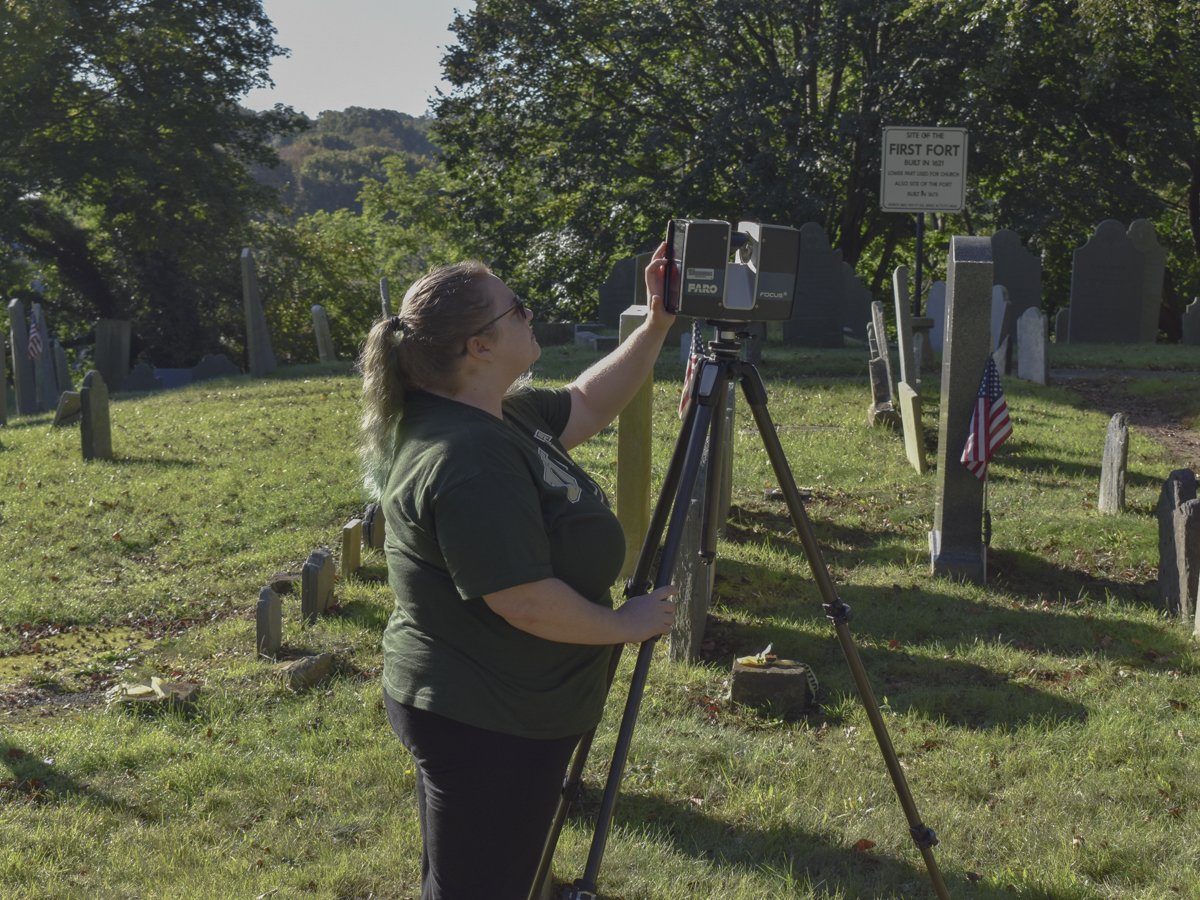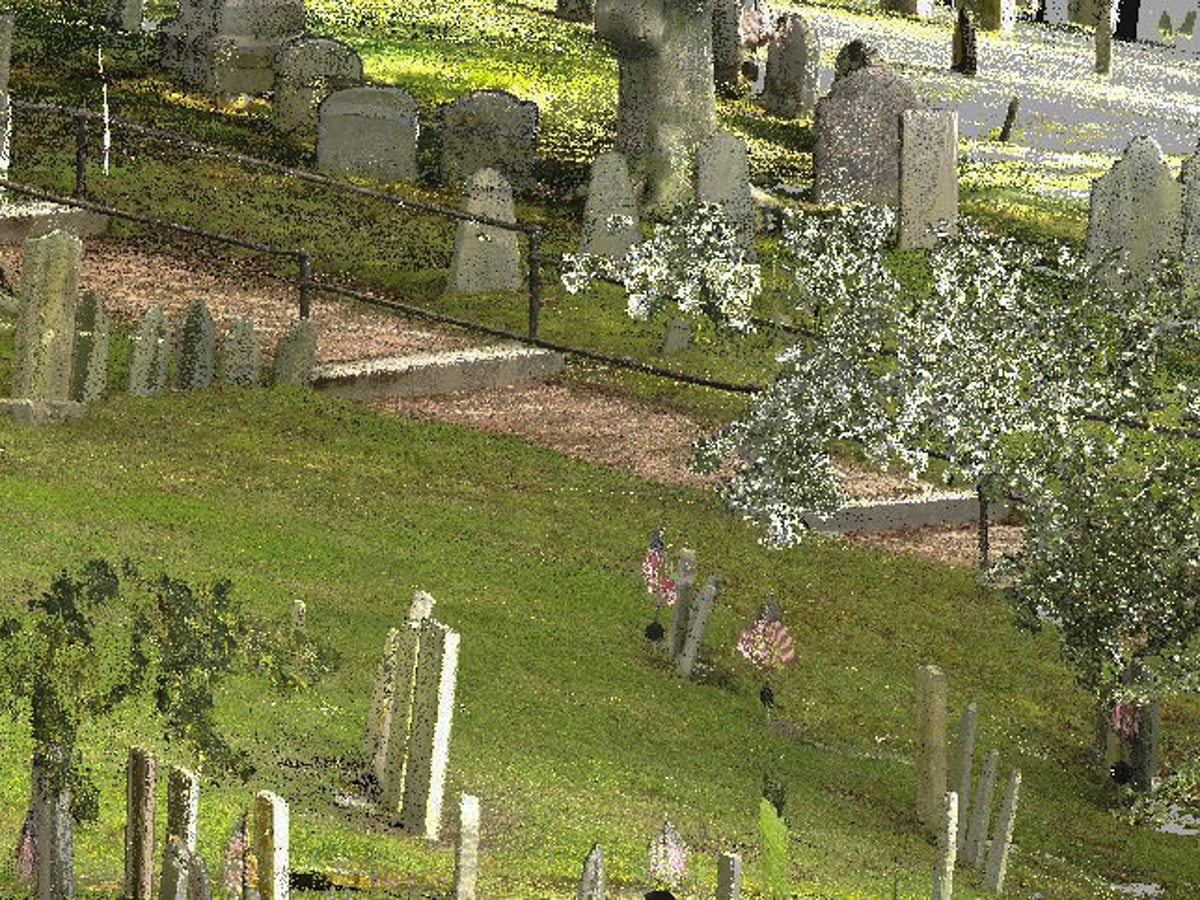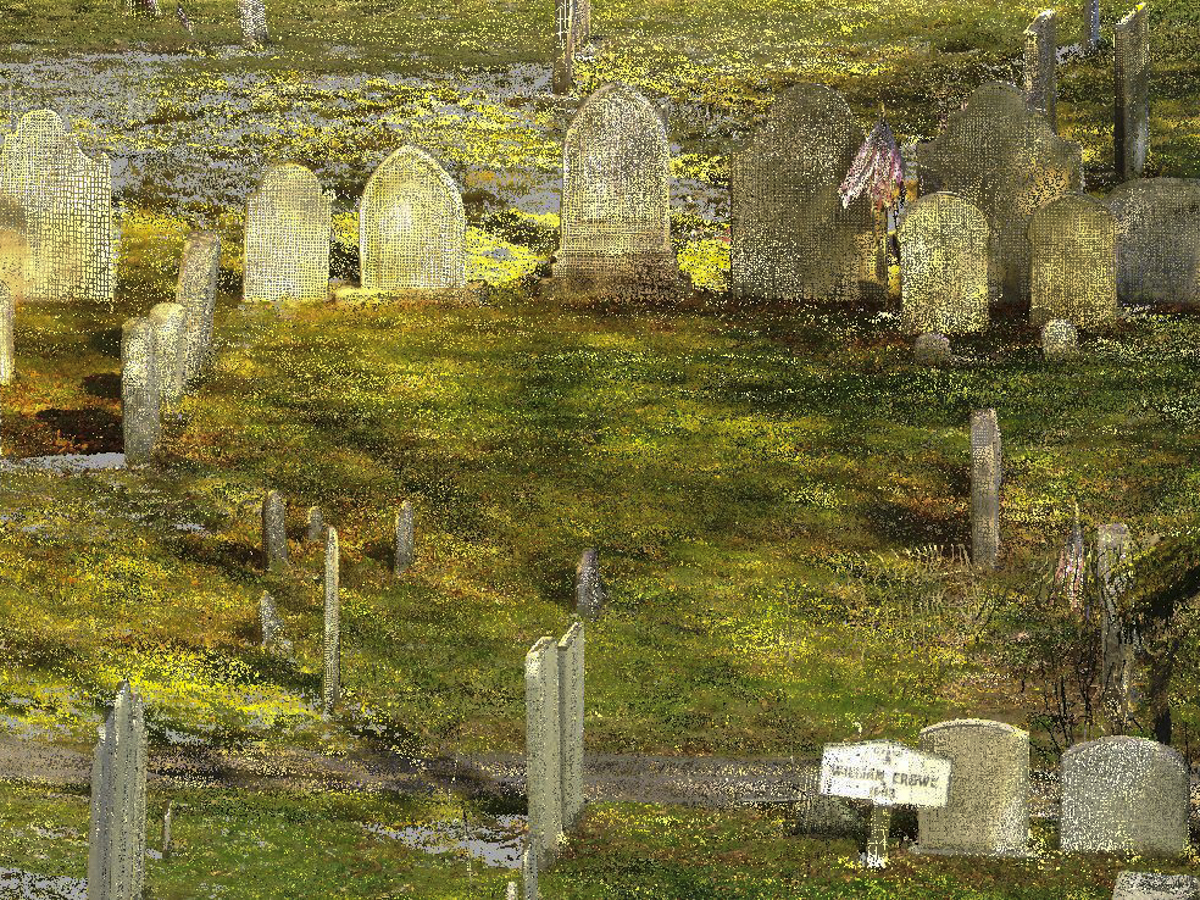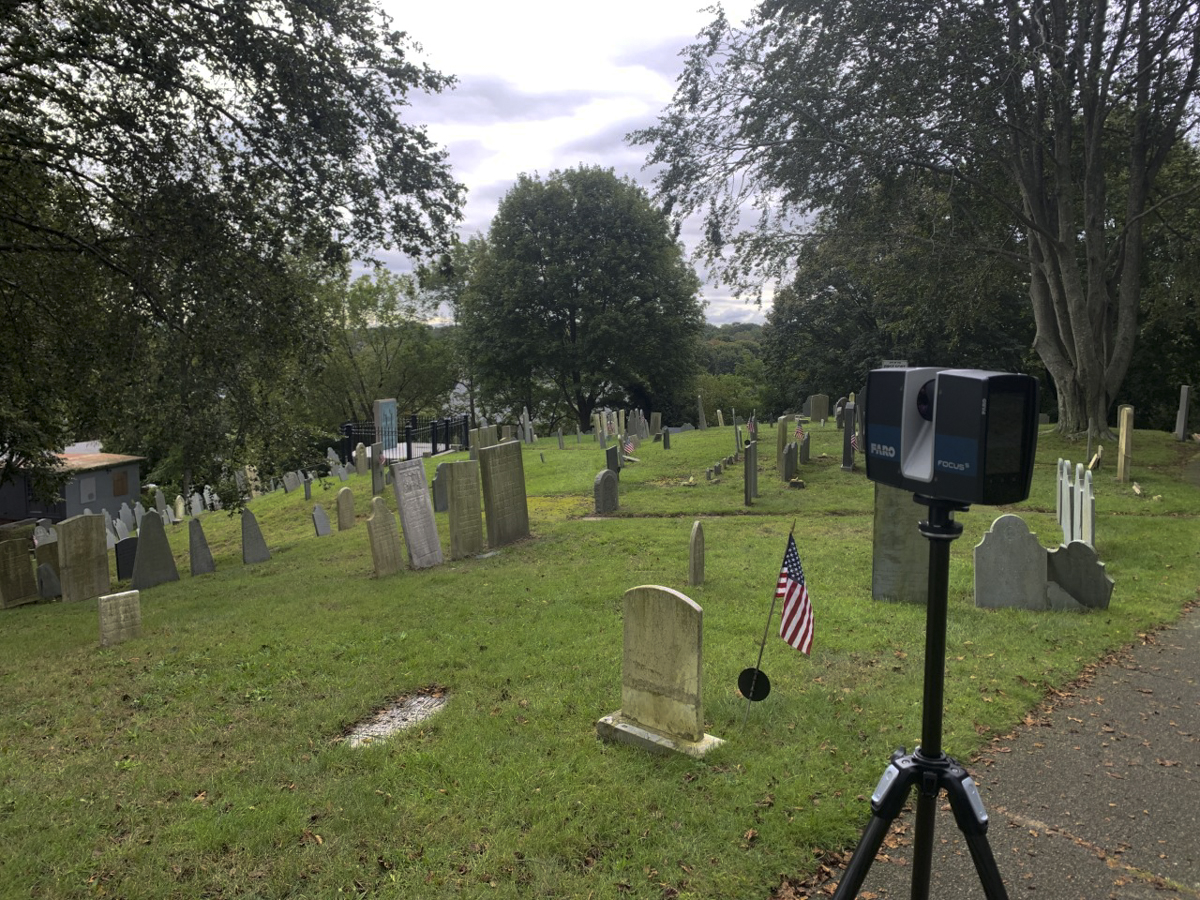Burial Hill Cemetery is situated on Old Fort Hill, overlooking historic downtown Plymouth, Massachusetts. Originally named Fort Hill, this renowned cemetery was listed on the National Register of Historic Places in 2015. Now Burial Hill, this cemetery is known for its iconic slate death’s head markers that sprawl across a scenic hilltop, shaded by ancient trees. Brick stairs lead up the hill to a series of pavement walkways, taking visitors across the undulating land and on a journey through time.
Throughout the year, especially during the summer months, tourists can be found wandering the cemetery, looking for their ancestors. Mayflower descendants will find monuments to individuals such as William Bradford and Robert Cushman. Famous last names can be found throughout the cemetery, from Alden to Warren.

After a failed attempt at traversing the Hudson River and a brief stay in Provincetown, the Mayflower and the Pilgrims aboard landed in Plymouth harbor in the winter of 1620. Here they found the abandoned Wampanoag village of Patuxet, which had been obliterated by disease the previous year. The Pilgrims built their original wooden fort in 1621 atop a hill overlooking the harbor, with clear views in all directions. This hill became known as Old Fort Hill. As the settlement survived, and then thrived, this hill also was used as a cemetery. The cemetery was extensively used, and served as the final resting place for at least 2,000 individuals. The last known burial took place in 1945.
With footstones included, existing surveys indicate about 2,300 stones on Burial Hill, which cover almost 300 years of burials in Plymouth. Stones of slate, sandstone, and marble crowd the hilltop, and the conditions of the stones vary.
With help from the Friends of Burial Hill (FOBH), a nonprofit organization established in 2013, stones get cleaned, recorded during survey, and some even get reset or repaired. Many stones exhibit evidence of earlier attempts at stabilization or preservation, from encasement in concrete to the use of nonferrous metal brackets. The stones are a unique and finite archaeological resource, and while many of the slate stones stand the test of time, others fracture from continued freeze and thaw cycles, or are damaged by tree limbs and roots. Stones lay toppled over and fragmented.
State law protects the site today, but there has been irreparable damage through time. In an attempt to preserve these stones in perpetuity, in Fall 2021, the Institute for Digital Exploration (IDEx), housed in the College of Arts and Sciences at the University of South Florida (USF), launched the Burial Hill 3D Digitization Project through a partnership with the local association Friends of Burial Hill. This project will digitize the entire cemetery, from laser scanning the overall site with terrestrial laser scanners to completing 3D models of individual stones and monuments with digital photogrammetry.


Due to the vast nature of the site, this community-based digital public mortuary archaeology project will be completed in multiple phases. Workshops will be held to train interested individuals and FOBH volunteers in photogrammetry methods in order to crowd-source the recording of this site. The methods used are based on best practices that IDEx has developed over the course of many other digital projects. Using these standardized methods, volunteers can contribute to a larger historic cemetery network database by recording other at-risk cemeteries in their own areas. The project information and data will be disseminated via the IDEx web infrastructure. Models and all corresponding metadata and paradata will be available to the public to ensure maximum transparency and replicability.
Once the data is collected, it can be used to develop a multitude of products. The most important of these products will be an interactive, searchable map of the cemetery so that visitors can find the stones they are looking for. Both augmented reality and virtual reality applications could be designed utilizing the compiled data.
These headstones and monuments are able to provide a wealth of information, from the widespread dispersion of the work of certain stone carvers, to temporal trends in mortuary archaeology. War casualties, epidemics, linguistics, socioeconomic status, and religion can all be studied using the information provided on these stones, but that can only happen if the stones are preserved for future generations and accessible to all.
According to Dr. Davide Tanasi, Professor of Digital Humanities in the History Department and Director of the Institute for Digital Exploration, this project will be an example of best practices in community-engaged historic cemetery digitization projects. As a primary tenant of digital public mortuary archaeology, the project will also will increase accessibility to this iconic site and increase heritage tourism in the area.
